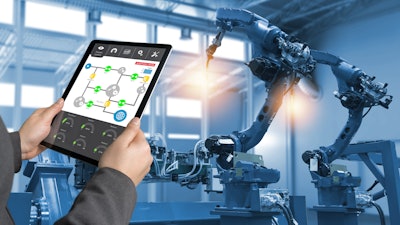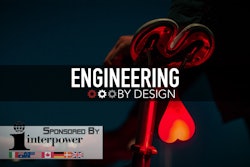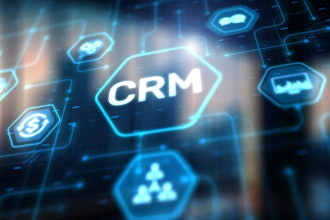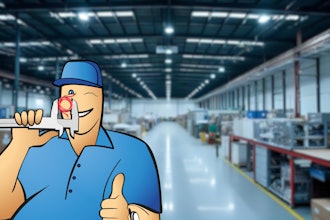
Despite its name, lean manufacturing is a concept that is no longer restricted to the manufacturing sector alone. The principles of lean manufacturing are now applicable for various industries from manufacturing to health, construction, energy, and the service industry.
But wherever it is applied, the motive remains the same - organizations use lean practices to identify and eliminate waste, streamline their workflow, continually improve their processes, and deliver the best value to the customer.
What is Lean?
In its most basic form, the concept of lean is focused on the need to eliminate waste from the manufacturing process.
Waste here refers to the use of resources and engaging in any activities that add no value to the customer.
Lean manufacturing enables its users to identify and eliminate waste throughout their operations - no matter the industry - and thereby increase overall efficiency.
But although lean delivers visible savings and continuous-improvement benefits, managing the process of implementing lean thinking is key to success. An important resource for this transition is the use of a computerized maintenance management software (CMMS).
Maintenance Software And Waste Elimination
Waste is more common than one may imagine. On page nine of this research by the Lean Enterprise Research Centre (LERC), up to 60 percent of production activities in a typical manufacturing operation can be classified as waste.
Though that figure appears alarming, there are many opportunities to reverse that using techniques like CMMS.
Let’s start by identifying these wastes in the first place. They are generally classified as the “7 deadly wastes” - Transportation, Inventory, Movement, Waiting, Overproduction, Over-processing, and Defects.
The question now becomes, how can maintenance software help to eliminate these wastes in your organization? A few ways it can be used to address some of these wastes include:
- Transportation: The need to continually move resources (tools, personnel, etc) from one location to another could be due to an information gap when using paper records that migrating to CMMS can quickly remove.
- Inventory: The most obvious area of waste as regards inventory management still remains overstocking of parts. With CMMS, one can easily monitor usage trends and establish more cost-efficient re-order levels.
- Waiting: Time wasted waiting for parts to arrive or for approval to carry out repairs adds up quickly. For example, an asset at a remote location (e.g a mine) breaks down and technicians are quickly moved there to repair the fault. They arrive only to discover that the part is not in stock and it will take vendors a couple of days to supply the necessary component. A centralized CMMS would have given all parties a better picture of the situation and prevented this inconvenience in the first place.
- Defects: In maintenance, flawed production is evident in repeated repair and rework, downtime, and delayed work order close out. CMMS makes it easy to quickly identify where the problem is coming from and to reduce the probability of the same issues in the future especially after reviewing records like equipment history.
The above demonstrate just a fraction of the possibilities of maintenance software in eliminating waste and inefficiencies.
Maintenance Software & Continuous Improvement
Along with eliminating waste, continuous improvement is an essential part of lean manufacturing.
The practice of continuous improvement, originated in Japan and evolved from the word Kaizen (change for the better). It is an avenue for addressing problems in an organization. It aims for long term solutions through gradual improvements in company processes and procedures.
Every organization can choose its own approach to implementing continuous improvement. But most companies would want to pay attention to:
- Accessing and measuring the problem.
- Defining the course of action to resolve the issue. This is where the actual execution of continuous improvement happens.
To understand how CMMS can help, let’s look at a common issue in many plants.
Say, for example, Plant ABC is experiencing problems with equipment maintenance and they are having frequent downtime.
While accessing/measuring the problem, the root cause is traced to inventory management. The organization discovers that it is frequently running out of vital spare parts leading to long machine idle time and delayed production. But interestingly, their storerooms are overstocked with other items that are not used for months at a time.
By using the inventory management module in CMMS, they can begin to correct the situation by measuring and monitoring their inventory level. With time, it’s possible to gradually reduce the stock levels of non-critical parts in favor of stocking more important items. Ultimately, they would have improved the process and increased equipment availability.
Choosing The Best Maintenance Software
Although maintenance software can dramatically improve a company’s lean practices and execution, there are so many options available that it can be hard to choose the best maintenance software that fits an organization’s culture, needs, and internal processes.
Ideally, there are several conditions that a CMMS should meet to qualify as an efficient Kaizen tool. Some of these conditions are:
- User friendly and easy to understand.
- Easily integrated with other systems (e.g. ERP).
- Mobile friendly for real-time exchanges within the team.
- Maintain easy to access records and history.
- Spare parts management.
- Work order management.
- Easy search features.
Everything discussed above (eliminating waste and continuous improvement) boils down to the need to conserve resources on an on-going basis. This has become a vital requirement for business profitability today. However, it is futile to attempt a lean manufacturing project without applying lean thinking to maintenance as well.
Using CMMS to manage these core areas of lean manufacturing will also directly improve an organization’s chances of thriving and competing in the present business climate.
Bryan Christiansen is the founder and CEO at Limble CMMS. Limble is a modern, easy to use mobile CMMS software that takes the stress and chaos out of maintenance by helping managers organize, automate, and streamline their maintenance operations.























